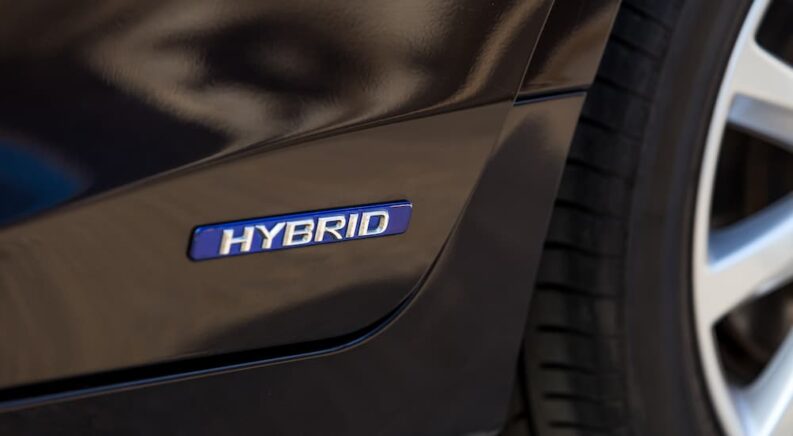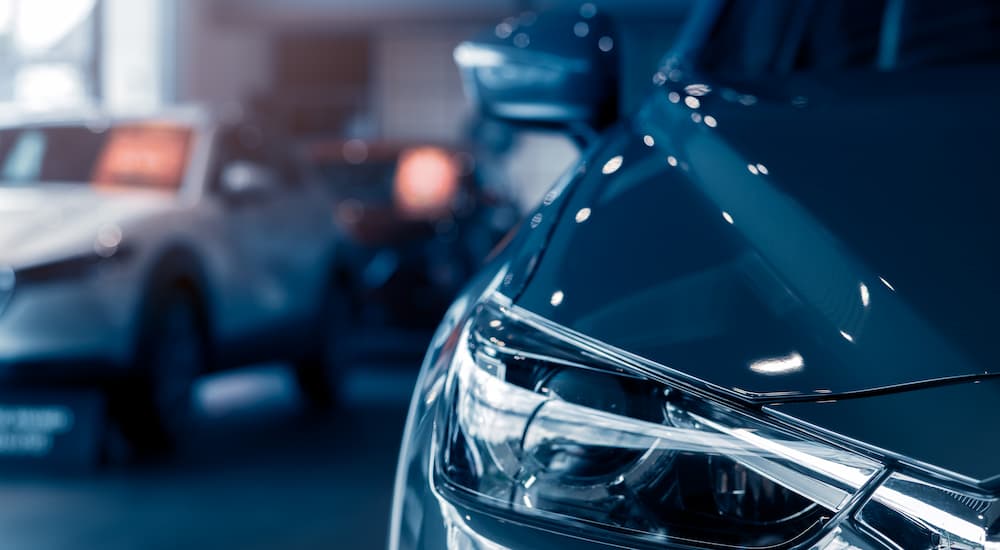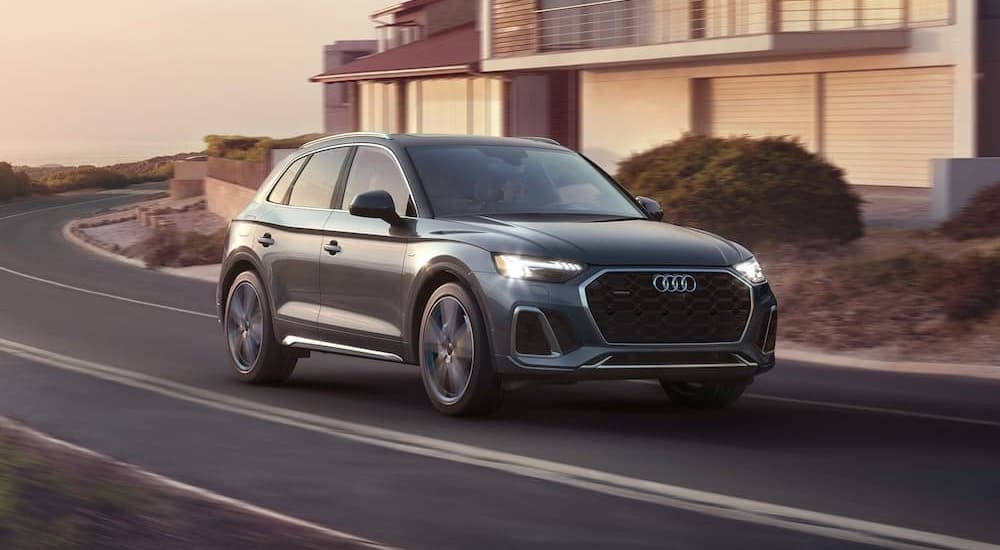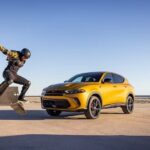Hybrid vehicle technology offers the best of both worlds. Adding an electric motor to a gas-powered engine boosts horsepower and fuel efficiency while allowing drivers to drive and fuel their cars like normal. Automakers agree with this assessment, as GM, Ford, Porsche, Toyota, Audi, and countless others have incorporated mild hybrid or PHEV technology into their high-performance vehicles.
Still, using hybrid tech isn’t a guarantee of success. There have been automotive flops for as long as automobiles have been produced (anyone else remember the Edsel?), and the high-performance hybrid segment isn’t immune. The way I see it, if we’re going to celebrate the successes of hybrid technology, we must acknowledge the failures, too. I’ve put together a list of the five biggest high-performance hybrid vehicle flops to see why they didn’t work.
BMW XM
I’ll start with a vehicle that is a flop-in-progress. The BMW XM was introduced in April 2023 as the first BMW M high-performance car with hybrid tech. By pairing the new M HYBRID drive system with a twin-turbo V8 engine, BMW created a vehicle making 738 hp. When adding its proven Sports Activity Vehicle (SAV) skeleton, BMW hoped to usher in a new area for its motorsports-inspired division. Instead, the BMW XM landed with a thud. Over its first two years, fewer than 4,300 vehicles have been sold in the U.S. The numbers are trending downward, with only 405 units moved in the first quarter of 2025.
The biggest thing the XM has caught flak for is its polarizing look. Even while touting how well it drives, MotorTrend described its appearance as “an X5 that drove through the M parts bin.” Although no one expects a high-performance hybrid to be a gas-sipper like the Prius, the XM is positively underwhelming with just an EPA-estimated 14 MPG combined. Finally, people have questioned whether the vehicle should even have the M designation, considering far less expensive BMW options offer similar specs. The 2025 model year is the first full one for the M5 and X5M that use the same powertrain, and it will be interesting to see if they suffer the same fate.
Mercedes-AMG C63 S E Performance
Another current vehicle underwhelming at the box office is this entrant from the Mercedes-Benz high-performance division. It’s been touted as the most powerful C-Class vehicle ever, making 671 hp from just four cylinders of internal combustion. The C63 also trumpets racing-inspired handling, driving dynamics, and responsiveness, yet customers have not responded with their dollars. Although Mercedes-Benz does not release sales figures for individual vehicles in each class, reports are unkind. When the vehicle became available in Mercedes-Benz’s native Germany, some dealerships struggled to sell a single C63 hybrid.
Like the BMW XM, multiple factors have contributed to the failure. The C63 had already lost momentum in 2022 when Mercedes-Benz switched from a twin-turbo V8 to an I-4 engine. Although the hybrid tech restores the output, it does so by using three electric motors and two transmissions, which is a turn-off to people who want something simple. Even Mercedes-AMG head Michael Schiebe admitted it’s an acquired taste. The power also doesn’t equate to personality, with one tester describing the powertrain as “emotionless.” Mercedes-Benz is standing behind the C63 S E Performance for now, but the future is murky at best.
Fisker Karma
Next, I want to discuss a high-performance hybrid that fared so poorly it helped bankrupt a company. The Fisker Karma was one of the first luxury PHEV vehicles, and ultimately the only vehicle from Fisker Automotive that ever made it to production. On the surface, this four-door sedan was impressive, combining a turbo I-4 engine, two electric motors, and an engine-powered generator to make a combined 403 hp. It also had a 32-mile all-electric range and a dazzling look that struck me as a modern version of the C3 Corvette.
Unfortunately, the Fisker Karma was troubled from the get-go. Originally scheduled for release in late 2009, production didn’t begin until mid-2011. This long delay and a price tag exceeding $100,000 cooled customer enthusiasm. Just over 2,000 Fisker Karmas were sold over the ensuing calendar year out of approximately 2,600 produced. Then, in October 2012, the automaker’s lone battery supplier went bankrupt. Without a battery source, Fisker Automotive suspended production on the Karma in November 2012 and declared its own bankruptcy a year later. All told, Fisker Automotive lost an estimated $1.4 billion during its seven-year lifespan. The Wanxiang Group bought the assets and sold the vehicle in China from 2017 to 2020 as the Karma Revero.
Lexus LS 600hL
Now I go to a case of a vehicle suffering a long, slow death. This hybrid luxury full-size sedan was designated the flagship model when the fourth generation of the LS series debuted for the 2007 model year. It marked the company’s first use of V8 hybrid technology, which produced a combined 438 hp and was more efficient than competitors with an EPA-estimated 20 MPG combined. It also had performance elements like an adaptive air suspension and a limited-slip differential. To emphasize its marquee status, Lexus produced a landaulet version for Prince Albert II of Monaco’s wedding in 2011.
However, many reviewers noted the vehicle didn’t offer much more than the LS 460L, and certainly not enough to justify a price over $30,000 higher. The Mountain Democrat described the LS 600hL as “an exercise in virtuosity.” As a result, a fandom never materialized beyond royalty. Lexus initially projected that the LS 600hL would sell about 1,500 vehicles annually, but it failed to reach those modest numbers. The LS 600hL peaked at 980 units in 2008. By 2011, Lexus was selling fewer than 100 per year. Yet Lexus stubbornly continued offering the vehicle through the end of the fourth LS generation in 2016, when it sold a whopping 40 600hLs.
Infiniti QX60 Hybrid
Overall, the QX60 has been a successful midsize luxury SUV, debuting in 2013 (as the JX35) and still going strong today. However, the hybrid variant was a major misfire. Introduced in 2014, it was certainly more efficient than a regular QX60, getting an EPA-estimated 26 MPG combined versus 23 (FWD) and 22 (AWD) for the gas-only crossover. It also had the same interior layout, which was praised by reviewers for its upscale materials, advanced technology, and spaciousness for people and cargo.
Ironically, it lacked good performance. Infiniti inexplicably swapped the 3.5L V6 engine in the gas-only QX60 for a 2.5L I-4. As a result, even with the boost of electrification, the QX60 hybrid made only 250 hp, 15 fewer than the base engine. The gap became even larger in 2017 when the 3.5L engine was upgraded to 295 hp, but the hybrid powertrain remained the same.
Not surprisingly, paying more to get less power didn’t sit well with the public. Although sales were initially okay and peaked at 2,356 units in 2015, they plummeted quickly and sharply thereafter. To its credit, Infiniti saw the writing on the wall and ditched the QX60 hybrid after 2017, when fewer than 300 were purchased.
Honorable Mentions
Not every vehicle succeeds, and the road of high-performance hybrids is littered with breakdowns. These flops serve as a cautionary tale, whether due to poor styling, a lack of soul, a cursed manufacturer, or just not separating themselves from non-hybrid vehicles. There are also plenty of honorable mentions, including the BMW ActiveHybrid series, Volkswagen Touareg Hybrid, and Audi Q5 Hybrid, which were supposed to have a big presence yet barely registered a blip on the radar. I can only hope automakers continue learning from their mistakes and apply those lessons going forward.






